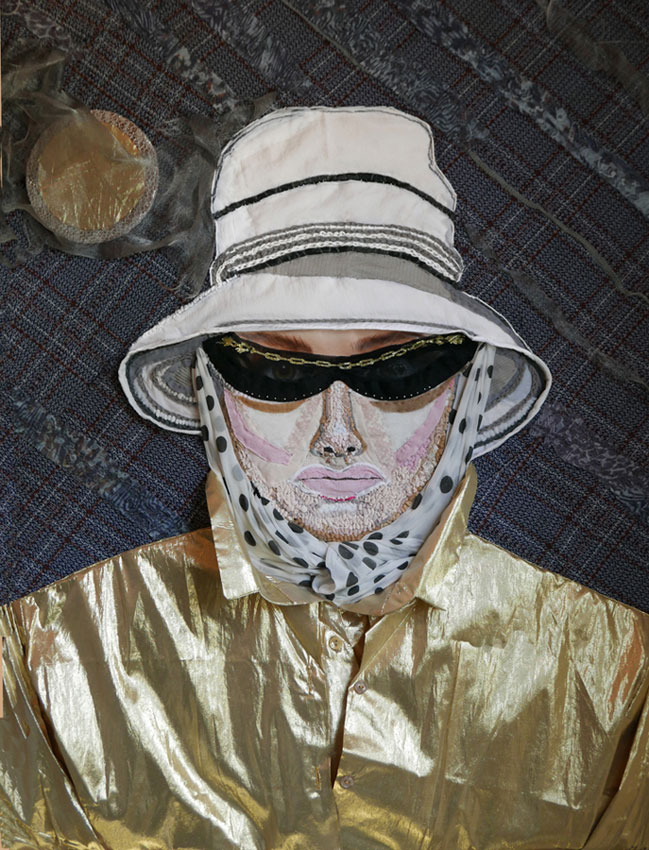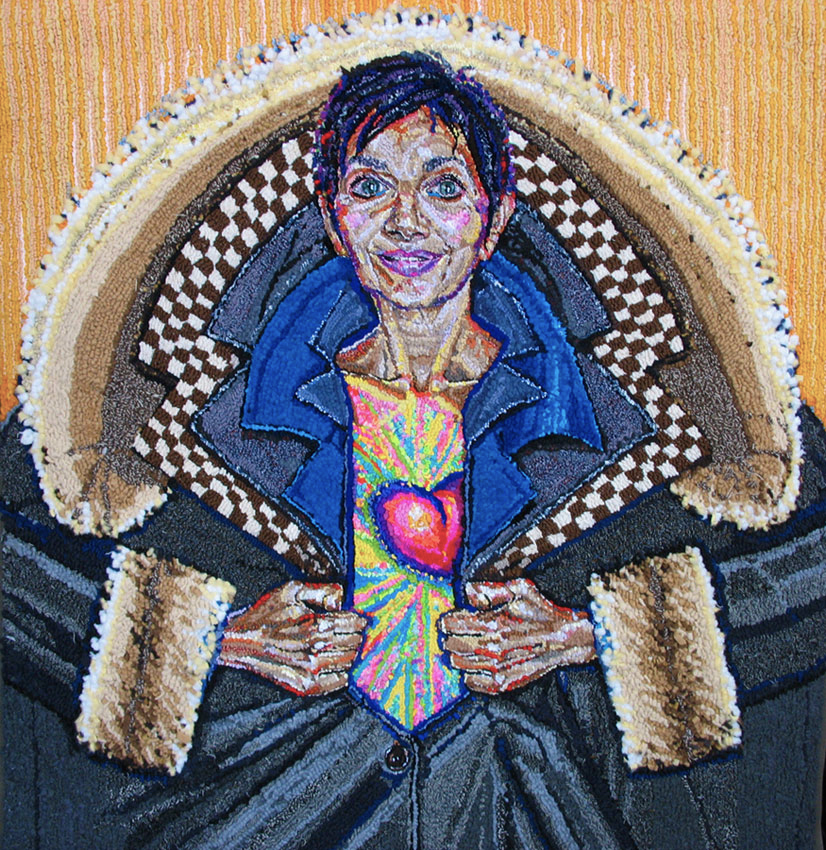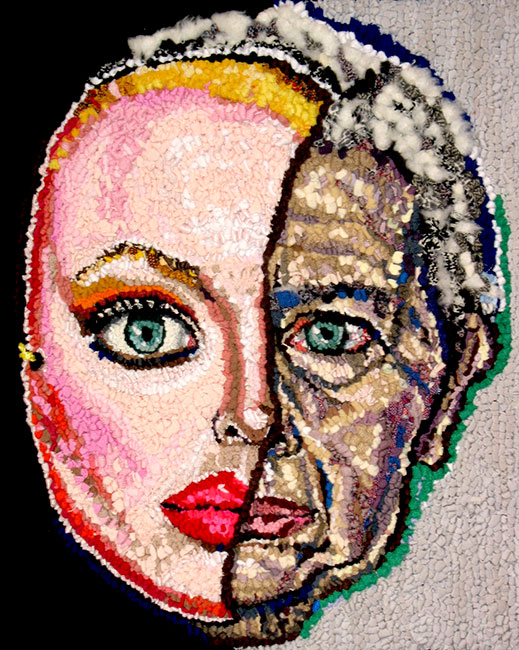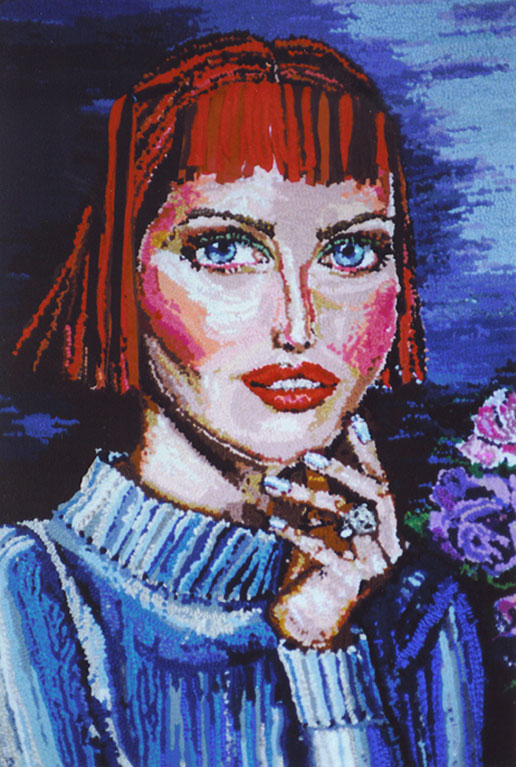















Distortion, 2024, discarded clothing, plastic mesh, photo, human hair, thread, yarn, 26 x 26 x 2 in
Reality and Identity distortion, distorting what it means to be human

Covered Up, discarded clothing, photo, thread, yarn, 34 x 30 in
The hidden artist lights up the darkness, shines her inner light

The Bad with The Good, discarded clothing, 41 x 43 inches
Examining contradictory aspects of self identity

Seen But Not Seeing, discarded clothing, 18 x 30 in
Identity creation and transformation via clothing and makeup

Chameleons and Eye, discarded clothing and faux skin, 16 x 16 x 2 in
Hiding and seeking the lost self, the camouflage of reality

When Every Day is Halloween, discarded clothing, 27 x 32 inches
Exploring the place of cloth in the refashioning of cultural, racial and gendered identities.

EXPOSURE, self portrait, discarded clothing, 51 x 44 in
Shedding the heavy layers, the second skin, to reveal the true self.

Power Up, self portrait as a man, discarded clothing, 19 x 19 in
Exploring the complex weave of gender and identity

Beneath The Surface, discarded clothing, 18 x 18 in
Uncovering a world of disguise to reveal what lies beneath the surface: Truth, vulnerability, individuality, and the authentic imperfect self

Before and After, discarded clothing, plastic bags, 68 x 44 in
Alteration and transformation of the human being

"Looking Good, Feeling Bad," discarded clothing, 43 x 28 inches
Fashion, art, and social psychology converge in Linda Friedman Schmidt’s artwork.

Mask, discarded clothing, 52 x 35 in
Discarded clothing, the superficial skin, is used to create an artwork about superficiality and surface.

Becoming White, 2018, discarded clothing and remnants, 18 x 14 in
Artwork created from clothing, the second skin, alludes to the artist's refugee family being called "greeners."

Face Value, discarded clothing, 18 x 26 inches
Examining how national identity and personal identity are connected to the dollar bill.

WALL, 2017, discarded clothing, 24 x 29 inches
The borders of identity: Clothing as a potent symbol of difference, a symbol of distinct cultural and religious heritage, a visible sign of a changing world.
